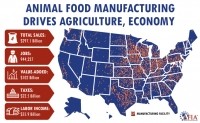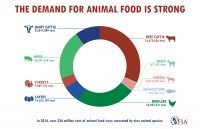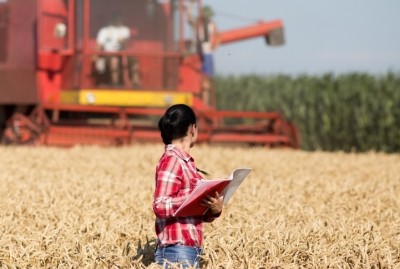Study shows feed industry is a key driver of economic activity in the US

Last year, the US Institute for Feed Education and Research (IFEEDER) commissioned Decision Innovation Solutions (DIS), an economic research and analysis firm, to conduct a first-ever economic analysis of those sectors.
There are 5,715 animal feed mills and 517 pet food facilities in the US, according to the recently completed study
The authors said their analysis — using an economic contribution model — is an effort to evaluate the existing industry structure within an existing economy, instead of the sudden ‘shocks’ to an economy, which an ‘economic impact study’ would assess.
DIS found that in 2016, US feed manufacturing generated $297.1bn in total US sales, including over $22.5bn in local, state and national taxes and over 944,000 jobs.
Five US states — Missouri, California, Texas, Pennsylvania and Iowa — topped all economic measures by contributing a combined roughly 337,000 jobs, $105.2bn in total sales and $8.3bn in local, state and national taxes, according to the DIS data. The analysts noted that there are 17 pet food mills in Missouri, 89 in Pennsylvania, 149 animal feed mills in California and almost 680 in Texas.
Several congressional districts, located in the Midwest or plains states, where a majority of livestock and poultry are farmed, also rose to the top, providing some $2.1bn in taxes to the economy.
Growth potential
Overall, the DIS researchers were optimistic about the growth potential of the US feed sector, despite disease and weather challenges in recent years.
“Although demand for animal feed and pet food is expected to thrive, several factors that impact demand can play a role in the economic output of this combined industry. For example, from 2011-2013, severe drought conditions shifted animal production, particularly beef cattle, to the Upper Plains and Midwest areas of the United States, largely in pursuit of better access to key feed ingredients. Within the last two years, however, adequate rainfall and more favorable weather conditions has slowed the shift of cattle from Texas and Kansas.
“Similarly, in 2015, the avian influenza outbreak led to a decline in laying hen inventories in key egg-producing states, such as Iowa and Minnesota, which experienced some economic drag due to the disease.
“Recently, improved environmental and weather conditions and a lack of animal disease outbreaks has led to animal populations largely recovering across the country. The current demand for feed is strong, which bodes well for the industry’s continued economic contribution.”
Cattle feed dominates
The second part of the DIS research focused on quantifying the amount of food consumed by the top nine livestock, poultry and aquaculture species throughout the various stages of their lives.
In years past, AFIA used data from the US Department of Agriculture’s National Agricultural Statistics Service on the number of animals processed for food each year and, working backwards, estimated a general diet per animal species to get the total amount of food consumed by livestock and poultry.
DIS reportedly conducted a more comprehensive approach, in which it worked with 25 industry and university subject matter experts to determine the specific diets fed to animals at various stages of their lives and adjusted them for regional dietary differences, due to the availability of ingredients and best management practices.
Overall, the research found that, in 2016, around 236.3m tons of feed were given to nine animal species, including: 74.7m tons to cattle on feed, 56.3m tons to broilers and 46.3m tons to hogs. Iowa, Texas, Nebraska, North Carolina and Minnesota topped the list in terms of states with the highest animal feed consumption rates.
Corn, the most abundantly produced crop in the US, made up slightly more than half of the total amount of feed consumed; corn combined with soybean meal and dried distiller’s grains with solubles (DDGs) represented more than 75% of all feed tonnage provided in 2016.
DIS also found that, in terms of the other ingredients used in US farmed animal diets, at least 1% of all tonnage fed to livestock and poultry in 2016 came from wet distiller’s grains, bakery meal, corn gluten feed, cottonseed meal, wheat midds, grain sorghum, soybean hulls and oats.














